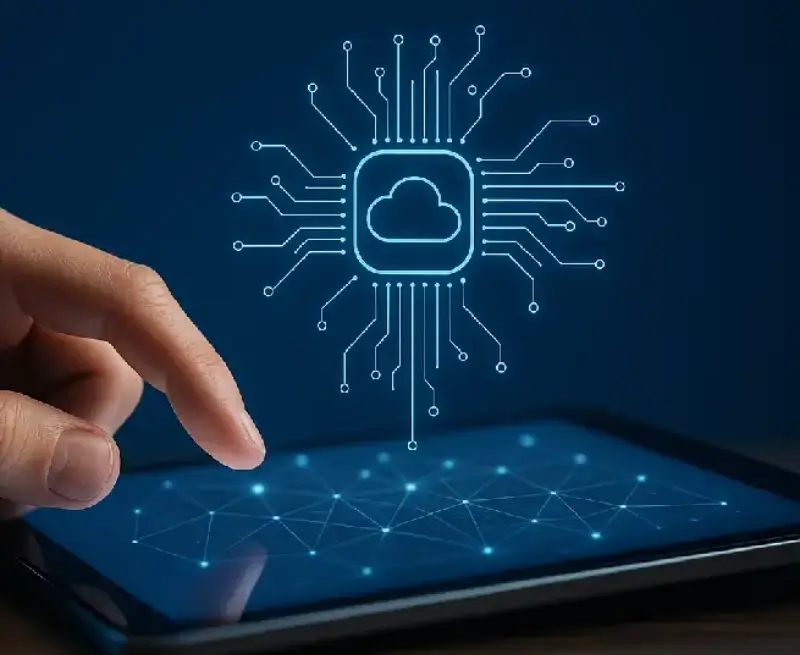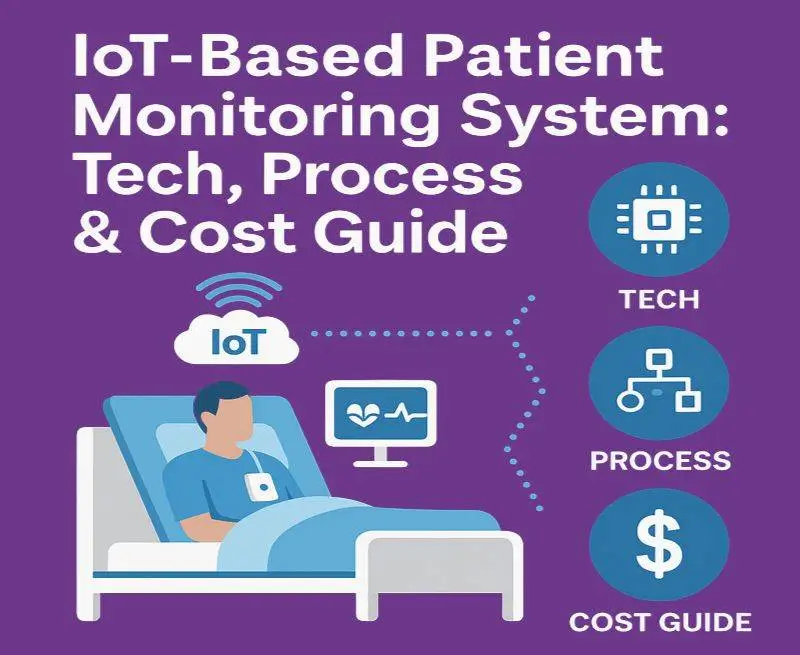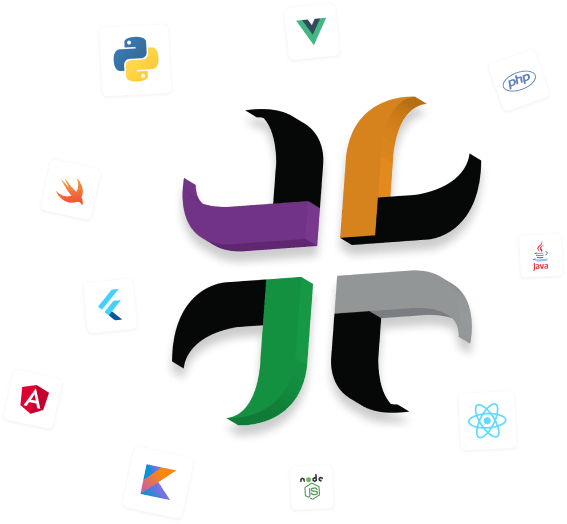
The Internet of Things (IoT) is revolutionizing the way businesses operate by enhancing efficiency, reducing costs, and improving decision-making. To build an IoT application that boosts business productivity, organizations must follow a structured approach encompassing hardware selection, connectivity, cloud integration, data analytics, security, and continuous optimization. This blog provides an in-depth guide to IoT application development, explaining the necessary steps, key technologies, and best practices. Whether you are looking for IoT development services or an IoT app development company, this guide will help you understand how IoT technology for business can create transformative solutions.
Understanding the Importance of IoT for Business Productivity
Businesses are increasingly adopting IoT technology to streamline operations, automate tasks, and enhance data-driven decision-making. From manufacturing to healthcare, IoT software development is helping industries achieve higher efficiency and cost savings. Here are some key benefits:
- Automation & Efficiency: IoT devices automate repetitive tasks, reducing human intervention and minimizing errors.
- Real-Time Monitoring: IoT sensors provide real-time data, enabling better asset tracking and performance analysis.
- Predictive Maintenance: IoT-based analytics prevent equipment failures by predicting maintenance needs.
- Improved Customer Experience: Personalized services and smart interactions enhance customer engagement.
- Optimized Resource Utilization: Smart energy management reduces waste and lowers operational costs.
By leveraging IoT technology for business, companies can improve workflow efficiency, minimize downtime, and increase profitability.

Key Components of an IoT Application
To successfully build an IoT application, businesses must understand its core components:
a) IoT Devices & Sensors
IoT devices, such as smart sensors and actuators, collect and transmit data. These devices can measure temperature, humidity, motion, pressure, and other parameters based on the business requirement.
b) Connectivity & Communication Protocols
Choosing the right connectivity method is crucial for IoT app development. Businesses can opt for:
| Connectivity Type | Range | Power Consumption | Use Case |
|---|---|---|---|
| Wi-Fi | Short | High | Indoor monitoring |
| Bluetooth & BLE | Short | Low | Wearable devices |
| LoRaWAN & Sigfox | Long | Low | Smart agriculture |
| 5G/NB-IoT | Long | Medium | Smart cities, logistics |
c) Edge Computing
Edge computing processes data closer to the source rather than relying solely on cloud servers, reducing latency and improving response times.
d) Cloud Platforms
Cloud services such as AWS IoT, Google Cloud IoT, and Microsoft Azure IoT store, analyze, and manage IoT data efficiently.
e) IoT Software & Mobile Applications
IoT software development involves creating platforms and mobile apps that help businesses interact with IoT devices, visualize data, and control operations remotely.

Steps to Build an IoT Application for Business Productivity
Step 1: Define Business Objectives and Use Cases
Before starting IoT application development, businesses must identify key challenges and objectives. Common use cases include:
- Manufacturing: Predictive maintenance to prevent equipment failures.
- Retail: Smart shelves and inventory management.
- Logistics: Real-time fleet tracking and route optimization.
- Healthcare: Remote patient monitoring using wearable devices.
- Smart Office: Automated energy management and workspace optimization.
Step 2: Choose the Right IoT Devices and Sensors
Selecting appropriate sensors depends on the industry and use case. Businesses should consider factors like power consumption, data accuracy, and connectivity range.
Step 3: Select an IoT Connectivity Solution
Based on the business needs, select an appropriate network protocol to ensure seamless data transmission.
Step 4: Develop IoT Software and Cloud Infrastructure
IoT software development involves:
- Firmware development for IoT devices.
- Backend development to store and process data.
- Cloud integration for scalability and remote access.
- Frontend & mobile app development to provide an interactive user interface.
Step 5: Implement Security Measures
Security is a critical aspect of IoT development services. Businesses should implement:
- Data encryption to protect sensitive information.
- User authentication mechanisms such as OAuth.
- Regular software updates to prevent vulnerabilities.
Step 6: Deploy and Test the IoT Application
Conduct thorough testing to ensure reliability and performance before full-scale deployment.
Step 7: Monitor, Maintain, and Optimize
Post-deployment, businesses must continuously monitor IoT systems, analyze data, and optimize processes to maximize productivity gains.
Conclusion
The adoption of IoT technology for business is a game-changer in improving productivity and efficiency. By following the right steps to build an IoT application, businesses can streamline operations, enhance customer experiences, and reduce operational costs. Investing in IoT application development not only improves real-time decision-making but also prepares businesses for the future of automation and data-driven insights. Whether you need IoT development services or an IoT app development company, choosing the right technology stack and security measures will ensure long-term success in your IoT journey.
Read More: How Can You Identify the Best App Development Company?
FAQs About IoT Application Development
Q1: How long does it take to develop an IoT application?
A: The timeline depends on project complexity, typically ranging between 3 to 12 months.
Q2: What industries benefit the most from IoT?
A: Manufacturing, healthcare, logistics, retail, and smart buildings benefit significantly from IoT technology.
Q3: How much does IoT app development cost?
A: IoT app development costs range between $10,000 and $500,000, depending on features and hardware.
Q4: What are the security challenges in IoT applications?
A: Data breaches, unsecured networks, device hacking, and lack of encryption are common security challenges in IoT application development.
Q5: What programming languages are used in IoT development?
A: Python, C, C++, Java, and JavaScript are widely used in IoT software development for device programming, cloud integration, and data processing.
Q6: Can IoT applications be integrated with AI?
A: Yes, AI-powered IoT enables predictive analytics, automated decision-making, and smart automation, enhancing business efficiency.
Q7: How do I choose the right IoT app development company?
A: Consider experience, industry expertise, security protocols, scalability, and customer reviews when selecting an IoT app development company.

 Software Development
Software Development Food Delivery
Food Delivery Taxi Booking
Taxi Booking E-Commerce
E-Commerce Real Estate
Real Estate Healthcare
Healthcare

